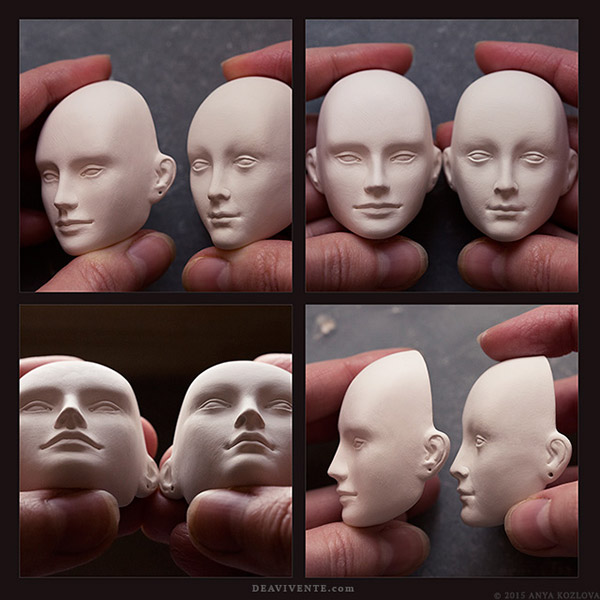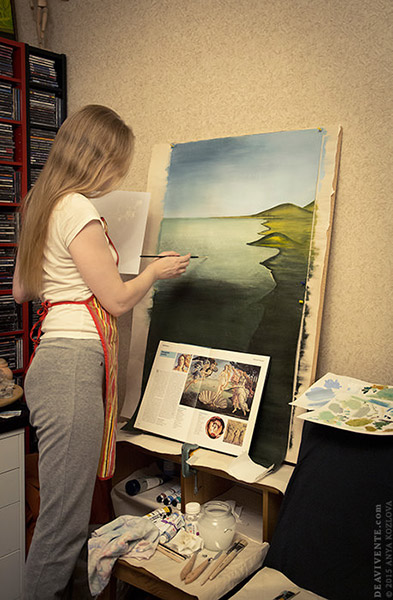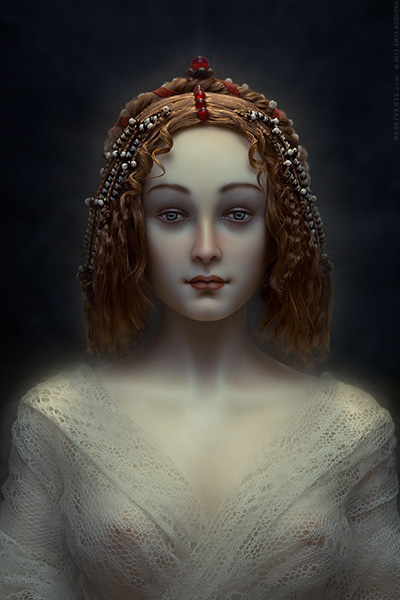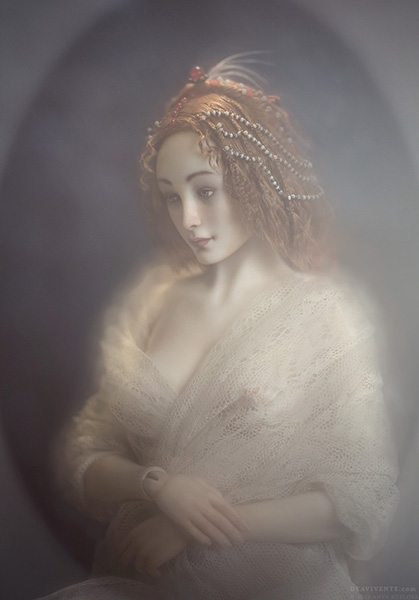Today I’d like to tell about a very special girl whose spirit and character touched deeply personal sides in my soul. Several months of hard but insanely exciting work have been embodied into a photo-painting “Nascita di Primavera” – “Birth of Primavera”, this is how the doll is called, but let me tell step by step.
I have the most devoted feelings for Sandro Botticelli’s paintings and maidens pictured in them. Their images hold so much depth, dignity, tranquility and wisdom, so that sometimes it’s impossible to tear myself away from their faces and I can contemplate them for hours.
There was no limits for my joy when I got to know that my client’s favourite painter was exactly Botticelli, and she dreamt of having a doll that embodied characters from his paintings, and an especially intimate one for her as well as for me was the character from “Nascita di Venere” (1482—1486) “Birth of Venus”. The client’s offer to bring a similar character to life encouraged me, it was incredibly pleasant to work on this doll and she inspired me like never before.
As you might guess, the doll’s name gives a hint to another well-known painting of Botticelli’s – “Allegory of Spring” (“Primavera”).
I used a light tone of porcelain for Primavera – pale, almost white skin gave her the particular tenderness and elegance incident to classical images.
Facial features of Botticelli’s Venus are very different from the face mold “Taiga”, thus to get more similarity with Venus the decision was made to deeply modify the face sculpture right on a porcelain cast. Modifications affected all the areas: eyes, eyebrow ridges, nose, lips, cheeks and cheekbones, chin. Primavera captivated me to the core, and the strong emotional rise from contemplating Venus’s painting was helping me to embody the beautiful goddess’s facial features in a porcelain face.
One may judge the difference between “Taiga” (on the left) and Primavera’s (on the right) faces in the following photos.
To imitate pictorial art, I’ve chosen warm colour gamma while painting Primavera and have made very soft and delicate tone transitions. Due to multilayered painting of the doll’s eyes, they look alive and deep. What’s interesting, depending on the view angle Primavera’s look appear to be a bit estranged and reflective as Venus’s one, or piercing and even a bit sly, for example as in this portrait.
Botticelli’s Venus has an utterly exceptional hairdo: short wavy locks at the front near the face gradually turning into gorgeous thick locks coming down to the knees. I tried to realize this romantic image by imitating a similar hairdo with gradual change of length for it to look natural and realistic. One can see the result in the following photograph:
Primavera’s second wig represents a Renaissance era hairdress. It was inspired by one of Botticelli’s canvases as well, depicting the artist’s eternal muse Simonetta Vespucci. I’ve incorporated certain changes into this hairdress to my taste, and some of them were dictated by the wig’s small scale. For this work beside hair I used some other kinds of materials: coral beads, glass beads, silk ribbons, feathers, accessories.
At some moment while reflecting on authenticity of the character I was creating and wholeness of its representation, I decided to paint a background with brushes that corresponded to the doll’s spirit and represented the atmosphere of “Birth of Venus”. For the sake of similarity with tempera painting I used artists’ acrylic paints.
This canvas was used for the doll’s photo-session and making a photo-painting as well.
Primavera has already left me and now she is in caring hands of her new owner (to whom I want to say a special thanks for a chance to touch the sublime and to do the least thing I can to pay my tribute to one of the greatest and best-loved artists in the history of painting).
This was a long and interesting work, and Primavera means much to me in the artistic way as well as in the technical one – while working I tried new techniques and materials, and this experience being so priceless for me will be used in future.
In conclusion, I present two art photographs of Primavera to you under a common title “Sensual renaissance” – as an expression of flaming sensuality and eroticism of the Renaissance era.
You can look at other photos of Primavera in her gallery.











This set of doll-paintings is so beautiful and evocative!
Thank you very much, Johnny!
Фантастика!
“Их образы таят в себе столько глубины, благородства, спокойствия и мудрости, что от них порою невозможно оторваться и их лики можно созерцать часами.”
Это в равной мере относится и к Вашим куклам